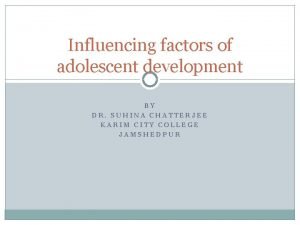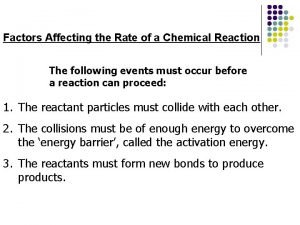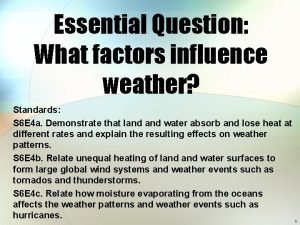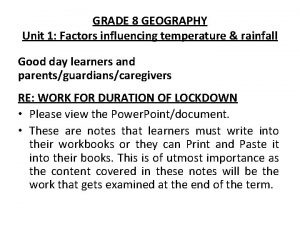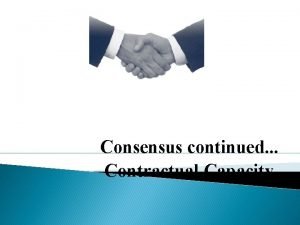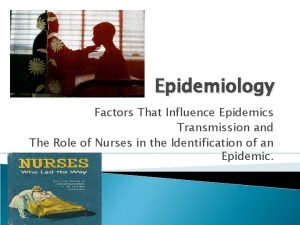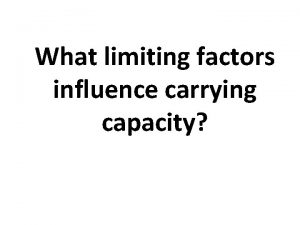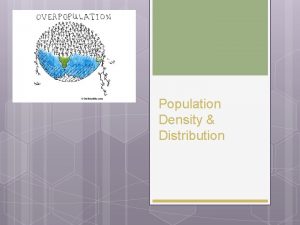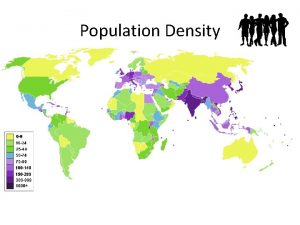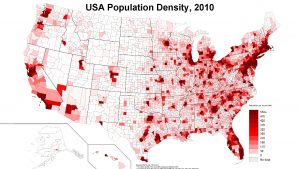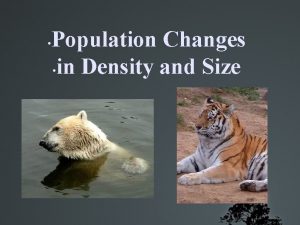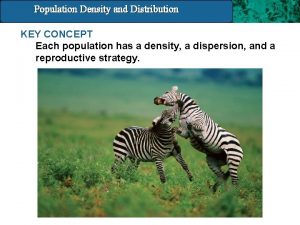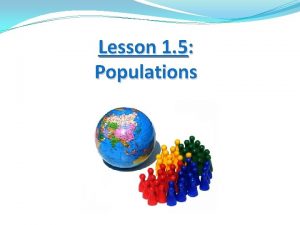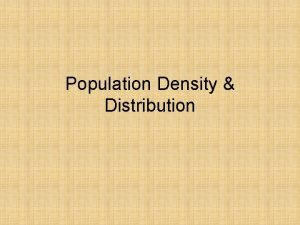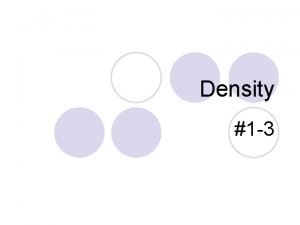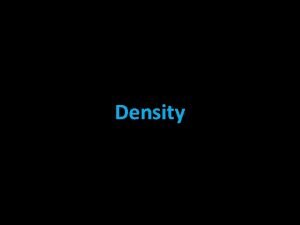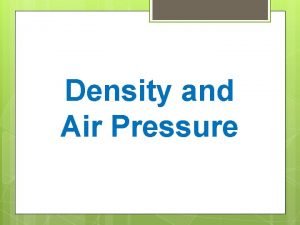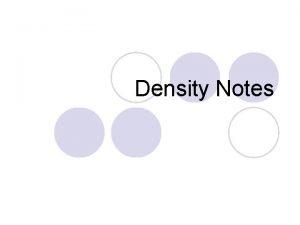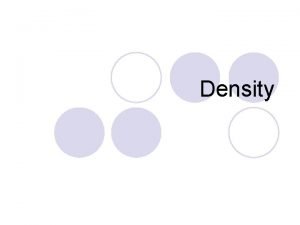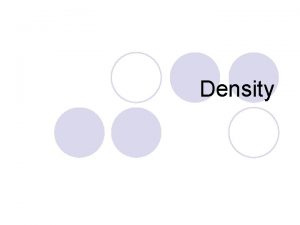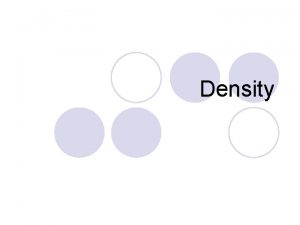Population Density What factors influence how a population

















- Slides: 17

Population Density What factors influence how a population changes over time? Write down three ideas.

Characteristics of Populations A group of individuals of the same species that live in the same area at the same time. These are the important characteristics of a population: 1. 2. 3. 4. 5. Geographic distribution Density Dispersion Growth rate Age structure

Geographic distribution is the range of the population. This term describes: the area that is inhabited by the population. size It The range can vary in ______. may be just a few centimeters, such as the mold on a piece of bread. Or the range may be huge, such as the migration area of whales.

Population Density Population density is: the number of individuals per unit area. Density is one of the main characteristics that describes a population. There is tremendous variation in density depending on the species _____ and the _______. ecosystem Some low densities, populations have _____ while other populations have high densities. ______

Calculating Population Density • To calculate population density you divide the 1 mile number of individuals by area. Ex. What is the population density of 14 cats in a 1 mile x 2 mile area? Area= 1 mile x Pop. Density= = 2 14 7 mile= 2 mile 2 cats÷ 2 mile 2 cats/mile 2 *Remember Area=Length x Width* 2 mile

• With a partner next to you quietly work on the packet to the next stop sign. STOP

Dispersion is…. …. the spatial distribution of individuals within the population. The three types of dispersion are: Clumped Dispersion Random Dispersion Even Dispersion

Clumped Dispersion a) b) Clumped distributions often occur when resources such as food, water, or living spaces are clumped together. In clumped dispersion the individuals are clustered together. c) Clumped distributions may also occur because a species has a certain social behavior, such as herding animals, flocks of birds, schools of fish or hives of bees.

Even Dispersion These penguins exhibit even dispersion because of aggressive interactions that occur between neighbors. b) Even distributions are usually the result of social interactions but ___________, the interaction results in the individuals trying to get as far away from each other as possible. a) In an even dispersion, individuals are: separated by a fairly even distance.

Random Dispersion a) In random dispersion, the location of one individual is independent of the location of the other individuals. b) Random dispersal may result from seed dispersal: by the wind or animals. c) A forest or a field of wildflowers results from the random dispersal of seeds.

• With a partner next to you work on the packet until the stop sign. STOP

Limits to Growth Examples of limiting factors include: 1. Competition 2. Predation 3. Parasitism and disease 4. Drought and other climate extremes 5. Human disturbances No population can undergo exponential growth forever. There are… …limits to how fast and how big a population can grow. Limiting Factors: A limiting factor is a factor that causes population growth to decrease.

1. A limiting factor that depends on population size is called a densitydependent limiting factor. Density-Dependent Factors 2. This means that the limiting factor only limiting when: becomes “_____” the population density reaches a certain level.

Competition for resources Density-dependent limiting factors include: ü competition ü predation ü parasitism and disease ü shortages of food ü shortage of territory/nesting sites. Predation Territory Parasitism Predator/Prey Interactions

The density-independent factors affect: all populations in similar ways, regardless of the size of the population. Density-Independent Factors Examples of density-independent factors include: a) Unusual weather or natural disasters such as floods and fires. b) Certain human activities, such as the damning of a river, or clear-cutting a forest.

These factors would affect …. …. . any population of any size. In response to densityindependent factors, populations may experience a crash where “______” the population is nearly _____. eliminated If one population is nearly decimated, it may also affect another population if the second population depends on the first as a food source.

• With a partner next to you quietly work on the packet to the next stop sign. STOP
 Physiological density
Physiological density How to compute for specific gravity
How to compute for specific gravity What is physiological density ap human geography
What is physiological density ap human geography Derive linear density expressions for bcc 110 and 111
Derive linear density expressions for bcc 110 and 111 Linear density of fcc 110
Linear density of fcc 110 Nda full dac
Nda full dac What factors influence adolescent development
What factors influence adolescent development What factors influence satiety?
What factors influence satiety? The lower the activation energy the faster the reaction
The lower the activation energy the faster the reaction Objectives of plant layout ppt
Objectives of plant layout ppt What factors influence weather
What factors influence weather 5 factors that influence temperature and rainfall grade 8
5 factors that influence temperature and rainfall grade 8 Role of network design in supply chain
Role of network design in supply chain Factor affecting consensus
Factor affecting consensus Factors that influence disease transmission
Factors that influence disease transmission Limiting factor definition biology
Limiting factor definition biology What factors influence how a lawmaker votes?
What factors influence how a lawmaker votes? Factor affecting communication process
Factor affecting communication process






